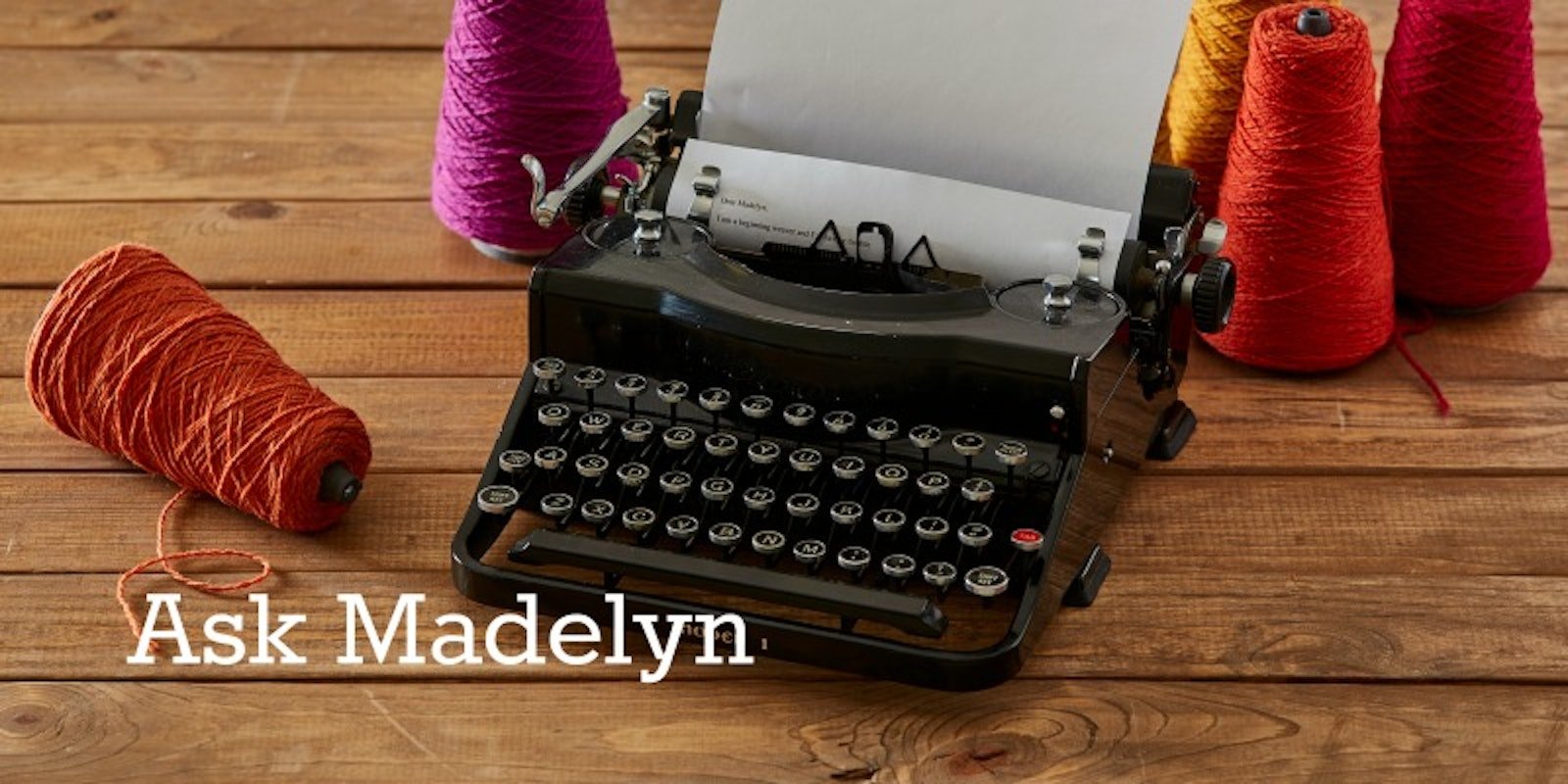When I was a new weaver, I didn’t realize that it was supposed to be hard to design your own project. Oddly enough, I credit this to my love of cooking. I learned early on how to tweak recipes to make them my own, and soon after started creating my own. I took the same approach to weaving and began by taking patterns from Handwoven and adjusting them here and there. Before long, I was off and designing from scratch. ~ Janet Dawson

Janet Dawson
For those of you out there who are ready to make the step from weaving patterns to adjusting them to fit your own needs, but are worried about the math, shrinkage, or other issues we have got the web seminar for you! In her pre-recorded web seminar "Making Printed Patterns Your Own: Techniques for Adapting Weaving Projects to Suit Your Needs," weaver and teacher
Janet Dawson
will teach you how to take a published project and make it uniquely yours. Janet sat down with us and answered a few questions about herself and her weaving. Be sure to check out her webinar! --ChristinaWhere are you from originally, and where do you currently live?
I'm from the Seattle area but moved to Sydney, Nova Scotia (aka Nova Snowtia), Canada over 20 years ago. Sydney is on Cape Breton Island, and has a rich history of handweaving handed down by its Scottish settlers.
What do you do besides weaving? What's your day job?
I own two retail shops: The Bobbin Tree, which is a shop for weavers, spinners, knitters, and yarny types of all sorts, and My Fair Ladies Ethical Emporium, which is a fair trade gift shop. Fortunately they're in the same location so I don't have to work in two places at once!
How and when did you start weaving?
When I moved to Sydney, I didn't have a visa to work or go to school and didn't have much else to do, so my mother-in-law suggested I go to the Cape Breton School of Crafts to meet other knitters. I did, but was too cheap to pay $50 on a knitting class when I already knew how to knit, so I took a weaving class instead. I wasn't particularly excited about it, but my grandmother had had a loom once and I figured, what the heck!
I didn't knit again for 15 years.
A year after I started weaving, my mother learned how to weave as well--she says she had to because it was all I could talk about and she wanted to be able to participate in the conversation. Both of us learning and then teaching the craft at the same time kept us involved in each other's lives even though we were a continent and an international border apart. My favourite classes are the ones Mom and I teach together in her studio.
_ Do you prefer to work from patterns, or draft your own?_
Draft my own, definitely.
How would you describe your personal style?
Colourful. Casual. Fun. Playful. Low-stress.
What other creative pursuits do you enjoy?
Knitting, spinning, and related yarny crafts.
_ Tell us about your weaving studio… what kind of space inspires you?_
Those are...not the same things. My weaving studio is my basement, and I don't like to weave or work alone. I spend most of my at-loom time in other people's studios.
I'm inspired by people, not places. People learning and exploring and being excited about what they're learning and exploring. I love to teach! _ What’s your weaving secret weapon?_
Three things:
- My mathy pattern brain. I see numbers and patterns everywhere. Weaving structures make sense to me intuitively. I can spot a treadling mistake from 50 paces, and weaving drafts feel like my native tongue.
- My mechanical brain. A skills aptitude test I took with my PSATs in high school suggested I should be a mechanic if I didn't go to university. My SAT scores suggested I go to university, but being able to see how parts fit together--how threads form cloth, how looms operate, how the structure of yarn affects the fabric produced--is a skill I use more often than my university education, and is a huge asset in weaving.
- My ability to communicate what I know in a way that's accessible. I can break things down into small and logical steps so that complex ideas are more easily understood and less intimidating. This is my teaching super-power.
How do you stay motivated on long projects?
Um. I'm the one who wrote the article “What to do when your attention span is shorter than your warp,” for Handwoven. I don't stay motivated. I keep changing projects up so there's something new around each corner.
What has been your favorite project recently?
Designing Space Invader Bronson lace curtains, partly loom controlled and partly pick-up (technically put-down).
What would your dream studio look like?
Like my mother's: spacious, lots of looms--some with tons of shafts, and some with only four. Big tables for classes or to spread work out on. Computers for designing, communicating, and driving looms. Big windows and natural light. Lots of yarn, lots of colour. Most importantly, it would have weavers--plural--in it.
What’s your current weaving soundtrack?
I like to let my husband choose the soundtrack. I like it even better when he hangs out nearby and plays video games so I can listen to what he's playing while I'm weaving.
I also like to listen to books on tape while weaving, but if they're interesting and the treadling isn't pretty simple, that's a dangerous combination.

